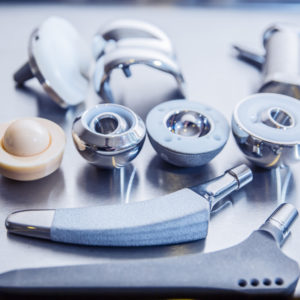Birmingham Hip Resurfacing Lawsuit Filed Over Metallosis Injuries

In a recently filed product liability lawsuit, an Alabama man claims that problems with the Birmingham Hip Resurfacing (BHR) system caused him to develop metallosis injuries, alleging that the hip implant is not only defective, but was never properly approved for sale by federal regulators.
The complaint (PDF) was filed by Stephen D. Fleming against Smith & Nephew, Inc. on June 24, in the U.S. District Court for the District of Maryland, where more than 350 similar lawsuits are already pending.
Fleming indicates that a Birmingham Hip Resurfacing (BHR) system was implanted in his right hip in November 2008, during a total hip arthroplasty (THA). However, about six years later he had to have the implant removed, due to pain and other complications when the BHR hip failed.

Learn More About
Lawsuits are being reviewed for several different dangerous and defective hip replacement systems.
Learn More About this Lawsuit See If You Qualify For CompensationThe lawsuit indicates that Fleming’s surgeon diagnosed him with a metallosis injury after finding elevated levels of cobalt and chromium in his hip joint, alleging that microscopic metal debris was released during the failure of the Birmingham Hip Resurfacing system.
The Smith & Nephew BHR was one of the first metal-on-metal hip replacement systems on the market, and concerns were raised about its safety even before it was approved.
A competitor, Wright Medical, attempted to stop the devices from getting approved, filing a citizen’s petition with the FDA in 2006, asking the agency to reject the application for the BHR, due to concerns over the adequacy of the clinical trials used to obtain premarket approval.
Due to a high rate of problems following Birmingham hip resurfacing, Smith & Nephew subsequently withdrew the system from the marketing in the U.S. market and eventually issued a Birmingham Hip Resurfacing recall in September 2015.
“At the time of the initial implant procedure, neither Plaintiff nor his surgeon were aware of the myriad problems associated with the BHR when used in a THA operation,” Fleming’s lawsuit states. “In fact, Smith & Nephew continued to promote the THA total hip system as a safe alternative to other metal-on-metal hip devices despite the THA not being a safer alternative and not being approved for sale in the U.S.”
Fleming maintains that his Birmingham hip was part of a “mix and match” system, which included a modular head and femoral stem that were not approved for use with the BHR acetabular cup. Because of that, his implant was never recalled, despite having the same problems as other BHR hips.
“The FDA did not approve the combination of these two components, which creates a metal-on-metal articulation, leading to toxic metal ions of cobalt and chromium being released into the patient’s body, eventually causing metallosis and other damage to the hip joint,” Fleming indicates. “Plaintiff’s unapproved total hip system failed because of the metallurgical and biomechanical interaction between all of its metal-on-metal components, due to tens of thousands of natural articulations of the total hip system components over the course of Plaintiff’s normal daily activity.”
In May 2017, the U.S. Judicial Panel on Multidistrict Litigation (JPML) ordered that all product liability lawsuits over Birmingham Hip Resurfacing be centralized before U.S. District Judge Catherine C. Blake in the District of Maryland.
According to the latest docket report (PDF), there are currently at least 383 cases pending as part of the federal MDL (multidistrict litigation), which are currently going through coordinated discovery and pretrial proceedings.
As hip replacement lawyers continue to review and file cases over the coming months and years, it is ultimately expected that more than 1,000 Birmingham Hip Resurfacing lawsuits may be included in the MDL.
Get more articles like this sent directly to your inbox.
"*" indicates required fields
2 Comments






MyriamAugust 15, 2020 at 2:21 am
What are the effects of metallosis? Thank you
JosephMarch 1, 2020 at 12:01 am
I have two Birmingham hip replacements A blood test indicated my Cobalt was 2.4 ng/ml my Chromium was 2.9 ng/ ml. Leaving me with little choice but to replace my hips again in order to lower my levels Any advice or help would be appropriate Thank you